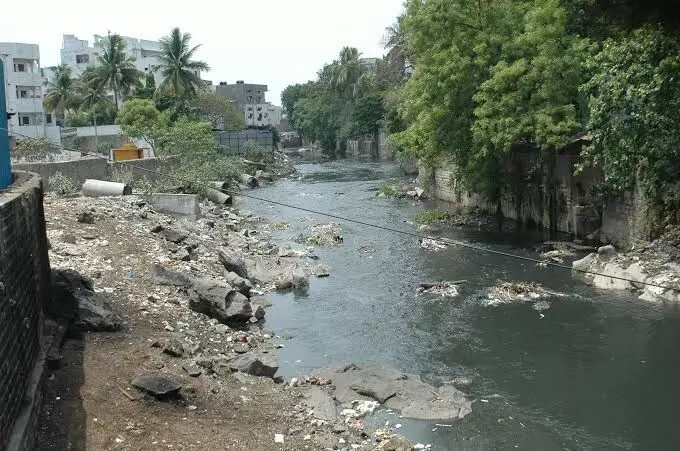Hyderabad flood woes: 70% of HYDRAA Prajavani complaints target stormwater drain encroachments
Nearly 70% of them highlighted how illegal constructions are choking drains and worsening floods
By Newsmeter Network
Representational Image
Hyderabad: Public frustration over stormwater drain encroachments has reached a peak given the flooding during monsoon rains.
At HYDRAA’s Prajavani grievance redressal programme, as many as 51 petitions were lodged. Nearly 70% of them highlighted how illegal constructions are choking drains and worsening floods.
Colonies under perennial flood threat
In Barkas–Salala, Chandrayangutta, residents submitted photographs showing houses built over a major drain, causing repeated flooding in three colonies every year. They urged the demolition of the structures to remove the annual flood risk.
Public spaces at risk
In Nagaram village, Keesara mandal (Medchal–Malkajgiri district), 12,000 sq. yards earmarked for parks and public amenities are allegedly under encroachment. HMT Bearings Nagar residents sought fencing to safeguard the site, which also includes planned roads.
Lake outlets blocked
The Orchid Residential Welfare Association in Balapur, Ranga Reddy district, reported that the main drain from a large lake was encroached upon, leading to frequent waterlogging in the area.
Road width halved
Vandanapuri Colony Phase-1, Beeramguda (Sangareddy district) residents alleged that 10 feet of a 20-foot road had been taken over by neighbouring plot owners. They demanded restoration as per the approved layout.
Sewage flowing into parks
In Upparapalli, Rajendranagar mandal, locals complained of sewage entering a park near SR Sadan, GK Avenue, because of drain blockages caused by encroachment, rendering the park unusable.
Urban pockets not spared
Residents of Ambedkar Nagar in Yellareddyguda and Ameerpet alleged that a house was built over a drain, disrupting floodwater flow and causing repeated inundation in their localities.
HYDRAA Additional Commissioner N. Ashok Kumar examined the complaints, cross-checked sites via Google Maps, and assigned the cases to concerned field officials for immediate action.